OLYMPIA - Archaeological site . . .
Olympia (Modern Greek: Ολυμπία, officially Archaia Olympia (Greek: Αρχαία Ολυμπία), is a small town in Elis on the Peloponnese peninsula in Greece, famous for the nearby archaeological site of the same name. The site was a major Panhellenic religious sanctuary of ancient Greece, where the ancient Olympic Games were held every four years throughout Classical antiquity, from the 8th century BC to the 4th century AD.[2] They were restored on a global basis in 1894 in honor of the ideal of peaceful international contention for excellence.
The sacred precinct, named the Altis, was primarily dedicated to Zeus, although other gods were worshipped there. The games conducted in his name drew visitors from all over the Greek world as one of a group of such "Panhellenic" centres, which helped to build the identity of the ancient Greeks as a nation. Despite the name, it is nowhere near Mount Olympus in northern Greece, where the Twelve Olympians, the major deities of Ancient Greek religion, were believed to live.
 |
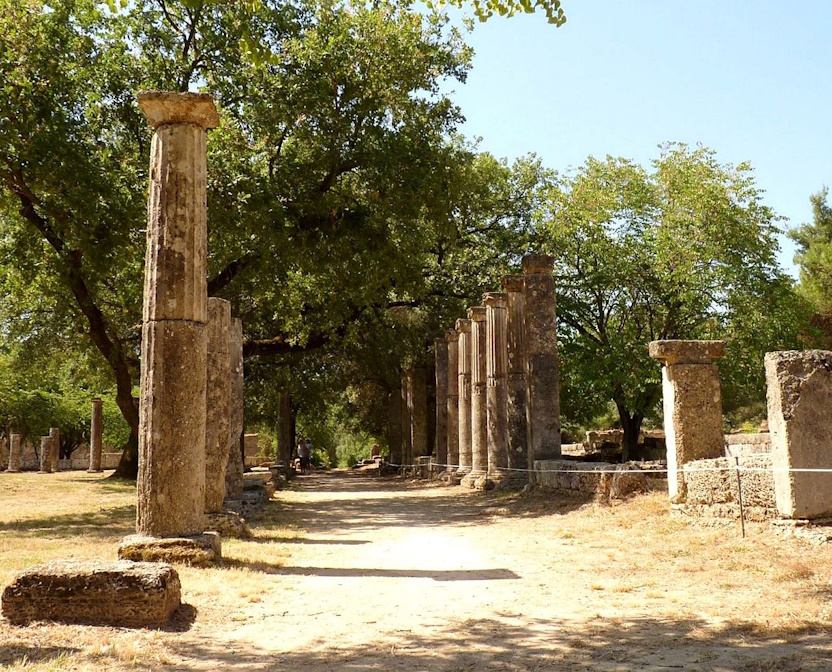 |
The Philippeion The palaestra
Ancient history records that Pisa and Elis, other villages in the region, contended with Olympia for management of the precinct, and that Olympia won, implying that the village was not identical to the precinct. The putative location of the ancient village is the modern village, which appears to have been inhabited continuously since ancient times.
The archaeological site held over 760 significant buildings, and ruins of many of these survive.
Of special interest to Greeks is the Pelopion, tomb of the quasi-mythical king Pelops, who gives his name to the Peloponnese and was ancestor of Agamemnon and Menelaus, the Greek kings of the Trojan War. The tomb suggests that he may not have been entirely mythical.
Another location that has a special interest to both ancients and moderns is the stadium. It is basically a field with start and end lines marked off by transverse curbing. The athletes entered under an archway of a vaulted corridor at the start. Spectators sat mainly on the field's sloping flanks. The length of this field became the standard stadion, an ancient Greek unit of distance, which appears in all the geographers. The stadium has been resurrected for Olympic use with no intentional alteration of the ancient topography. Transient stands are easily thrown up and removed.
The first major games to have been played at the Olympia stadium were said to have first begun in the 720s. These prestigious ancient games took place during the festival of Zeus at Olympia. Olympia was a sanctuary, but it was within the independent state of Elis, and since the Eleans managed the games, there was sometimes bias. The famous Olympic truce only mandated safe passage for visitors and did not stop all wars in Greece or even at Olympia.
The village services the adjacent archaeological site to the southeast. The Kladeos River forms the site's western border. Visitors walk over the bridge to find themselves in front of the main gate. Full visitation is an extensive walking event. Some excavation is in progress there frequently. Moveable artifacts for the most part have found a home in one of the site's three museums.
Ancient site
Olympia lies in the valley of the Alfeiós River (also Anglicized as Alpheus or Alpheios) in the western part of the Peloponnese, today around 18 km (11 mi) from the Gulf of Kyparissia in the Ionian Sea, but in antiquity perhaps half that distance.
According to Pausanias, there were over 70 temples in total, as well as treasuries, altars, statues, and other structures dedicated to many deities. Somewhat in contrast to Delphi, where a similar large collection of monuments were tightly packed within the temenos boundary, Olympia sprawled beyond the boundary wall, especially in the areas devoted to the games.
To the north of the sanctuary can be found the Prytaneion and the Philippeion, as well as the array of treasuries representing the various city-states. The Metroon lies to the south of these treasuries, with the Echo Stoa to the east. The hippodrome and later stadium were located east of the Echo Stoa. To the south of the sanctuary is the South Stoa and the bouleuterion, whereas the palaestra, the workshop of Pheidias, the gymnasion, and the Leonidaion lie to the west.
Olympia was also known for the gigantic chryselephantine (ivory and gold on a wooden frame) statue of Zeus that was the cult image in his temple, sculpted by Pheidias, which was named one of the Seven Wonders of the Ancient World by Antipater of Sidon. Very close to the Temple of Zeus which housed this statue, the studio of Pheidias was excavated in the 1950s. Evidence found there, such as sculptor's tools, corroborates this opinion. The ancient ruins sit north of the Alpheios River and south of Mount Kronos (named after the Greek deity Kronos). The Kladeos, a tributary of the Alpheios, borders the west.
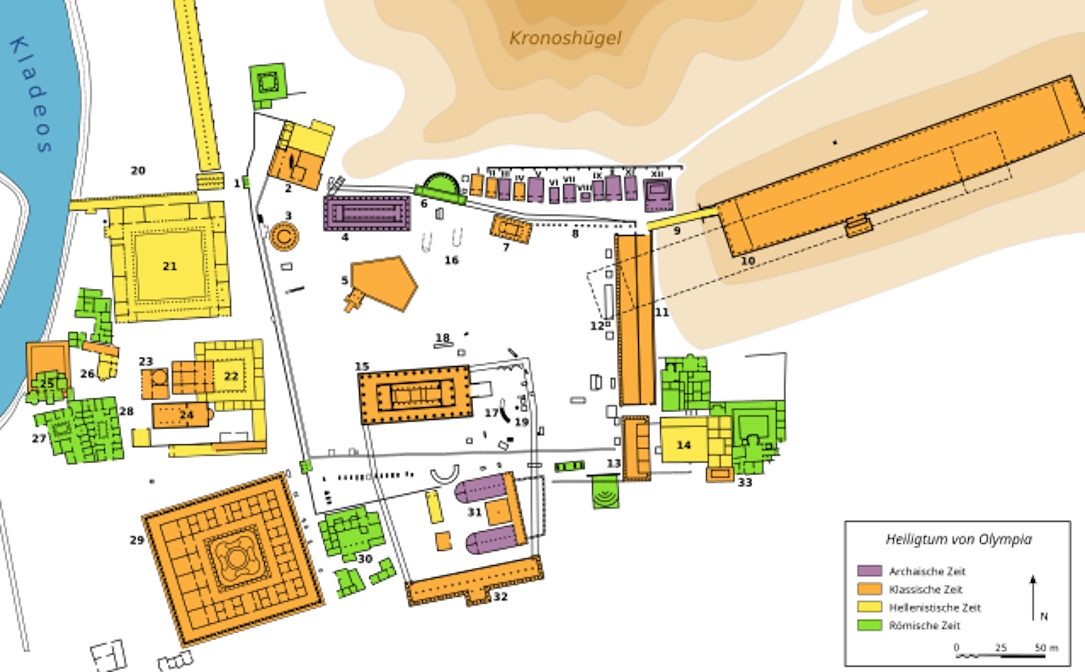 |
 |
Site plan The Temple of Hera
The Altis
The Altis was an irregular quadrangular area more than 183 m (200 yd) on each side and walled except to the North where it was bounded by the Kronion (Mount Kronos). It consisted of an arrangement of buildings, the most important of which are the Temple of Hera (or Heraion/Heraeum), the Temple of Zeus, the Pelopion, and open sites used for traditional activities, such as the area of the great altar of Zeus, where the largest sacrifices were made.
The Herakleian sanctuary
Pindar, the 5th-century-BC Theban poet, says that Heracles founded the "sacred precinct" (zatheon alsos) next to the tomb of Pelops in honor of Zeus, his own father, referring to the precinct founded as the Altis, and made the "encircling area a resting-place for feasting," honoring the river Alfeios and the 12 Olympian gods. He assigned the name "Hill of Cronus" to the previously unnamed hill, and then instituted the Olympic games. Pindar creates in a single, compact sentence, what has been called "Olympic space". The space is a work of man created by a sequence of operations: first, Herakles lays out (stathmato) the alsos with a surveying instrument called a stathme. Second, he "fixes" the border of the Altis (paxais Altin), and third clears the space around it (en katharo diekrine). Fourth, he "made" (etheke) ground (pedon) as an entertainment space (lusin) for festivals (dorpou). Then he goes on to "honor" the ford of the Alfeios (necessarily to the south), the 12 gods, and to name the unnamed hill for Kronos. Then he can hold the first games.
Today trees have been allowed to grow over the site quasi-grove. These are primarily Cercis siliquastrum, colloquially "Judas-tree" (nothing to do with Judas), a pink-flowering low tree. If they are natural to the site now, they probably were in antiquity. Olea europaea, olive, is of course ubiquitous in the region, usually growing in planted groves, but sometimes wild. Platanus orientalis, the plane tree, is common in the area, and Pinus halepensis. Aleppo pine, also covered Kronion until the fires of 2007-2009.
There is not much indication of what structures were in the Altis, except the games must have been part of the "feasting" and therefore were held in the "resting-place". The size of the precinct must have varied as the site developed, as the original stadium is known to have extended well within the later east wall. That the temple of Zeus was built within the precinct is a reasonable assumption. As there is no trace of a succession of walls, the wall might reasonably be presumed to have been a late feature, but no later than Pindar.
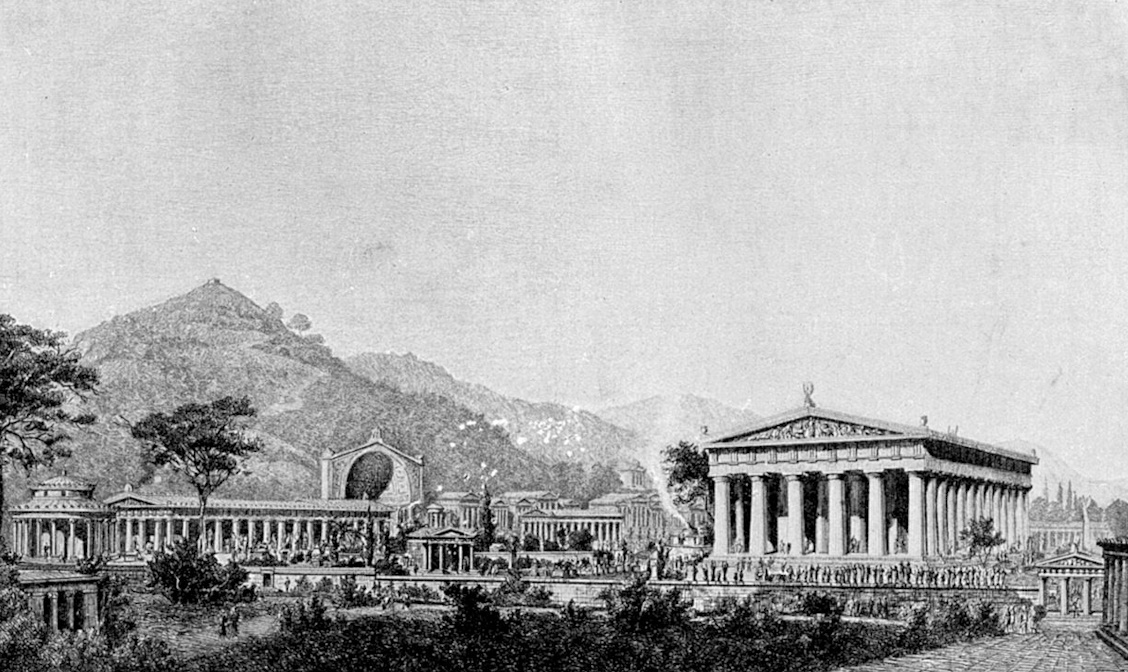 |
 |
Reconstruction of the Altis (c. 1900) Model of the Temple of Zeus
The Pelopian sanctuary
The classical Pelopion was a separate sanctuary defined by a peribolos wall dating to the 6th century BC, long after the conventional start of the Olympic games, 776 BC (which cannot be disrespected without tampering with the entire ancient Greek dating system). This was certainly a remodeling of a previously existing sanctuary of Pelops. A 1987-plus excavation of the Pelopion established "a continuous ceramic sequence for the 11th century onward" including submycenaean (1100-1000 BC) and protogeometric (1000-900 BC). There was a good sprinkling of "cultic" material (votive figurines and vases).
Etymologies
The name Altis was derived from a corruption of the Elean word also meaning "the grove" because the area was wooded, olive and plane trees in particular.
 |
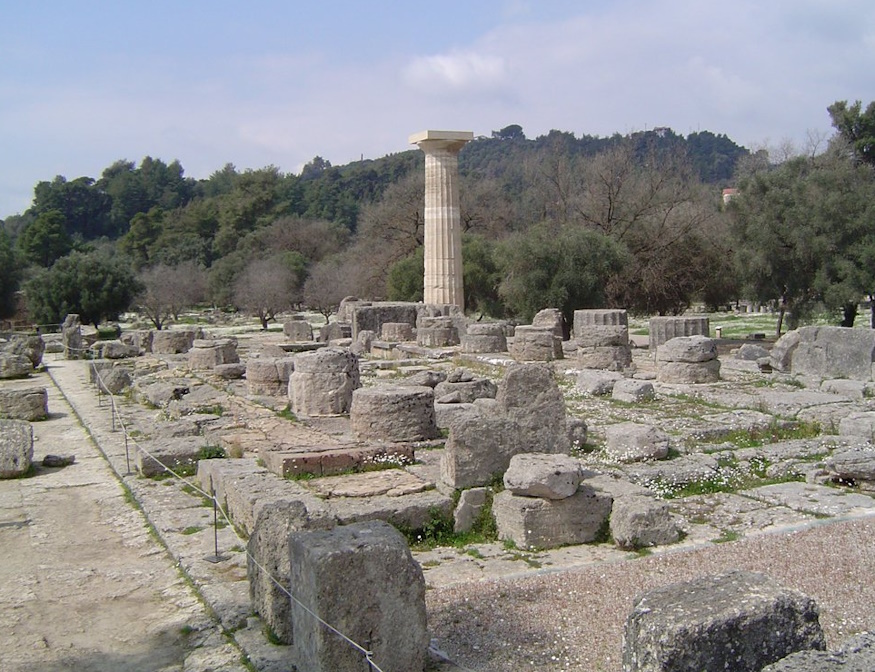 |
Doric capital of the Temple of Hera The Temple of Zeus
Prehistory
It used to be thought that the site had been occupied since about 1500 BC, with a religious cult of Zeus developing around 1000 BC. It may be that instead there was only a sanctuary from the 9th or 8th centuries, though the question remains in debate. Others believe that remains of food and burnt offerings dating back to the 10th century BC give evidence of a long history of religious activity at the site. No buildings have survived from this earliest period of use.
Geometric and Archaic periods
The first Olympic festival was organized on the site by the authorities of Elis in the 8th century BC – with tradition dating the first games at 776 BC. Major changes were made to the site around 700 BC, including levelling land and digging new wells. Elis' power diminished and the sanctuary fell into the hands of the Pisatans in 676 BC. The Pisatans organized the games until the late 7th century BC.
The earliest evidence of building activity on the site dates from around 600 BC. At this time, the Skiloudians, allies of the Pisatans, built the Temple of Hera. The Treasuries and the Pelopion were built during the course of the 6th century BC. The secular structures and athletic arenas were also under construction during this period, including the Bouleuterion. The first stadium was constructed around 560 BC and it consisted of just a simple track. The stadium was remodelled around 500 BC with sloping sides for spectators and shifted slightly eastward. Over the course of the 6th century BC a range of sports were added to the Olympic festival. In 580 BC, Elis, in alliance with Sparta, occupied Pisa and regained the control over the sanctuary.
Classical period
The classical period, between the 5th and 4th centuries BC, was the golden age of the site at Olympia. A wide range of new religious and secular buildings as well as structures were made.
The Temple of Zeus was built mid 5th century BC. Its size, scale and ornaments were beyond anything previously constructed on the site. The Greek Baths and further sporting facilities, including the final iteration of the stadium, and the hippodrome (for chariot-racing) were constructed. The Prytaneion was built at the northwest side of the site in 470 BC.
In the late classical period, further structures were added to the site. The Metroon was constructed near the Treasuries around 400 BC. The erection of the Echo Stoa, around 350 BC, separated the sanctuary from the area of the games and stadium. The South Stoa was built at the southern edge of the sanctuary at approximately the same time
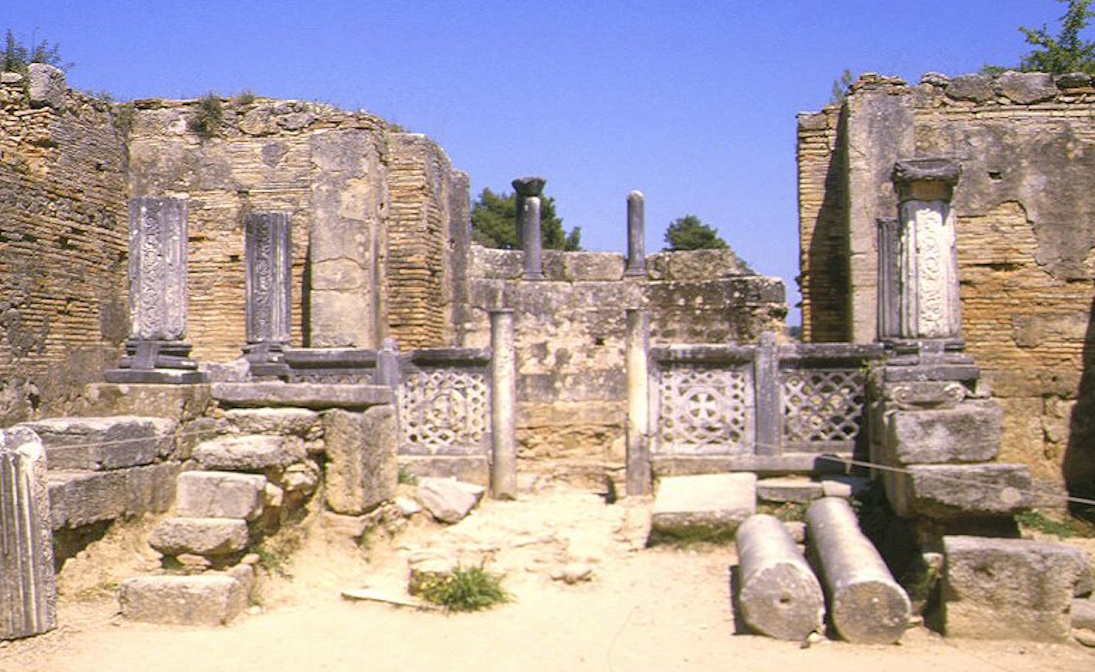 |
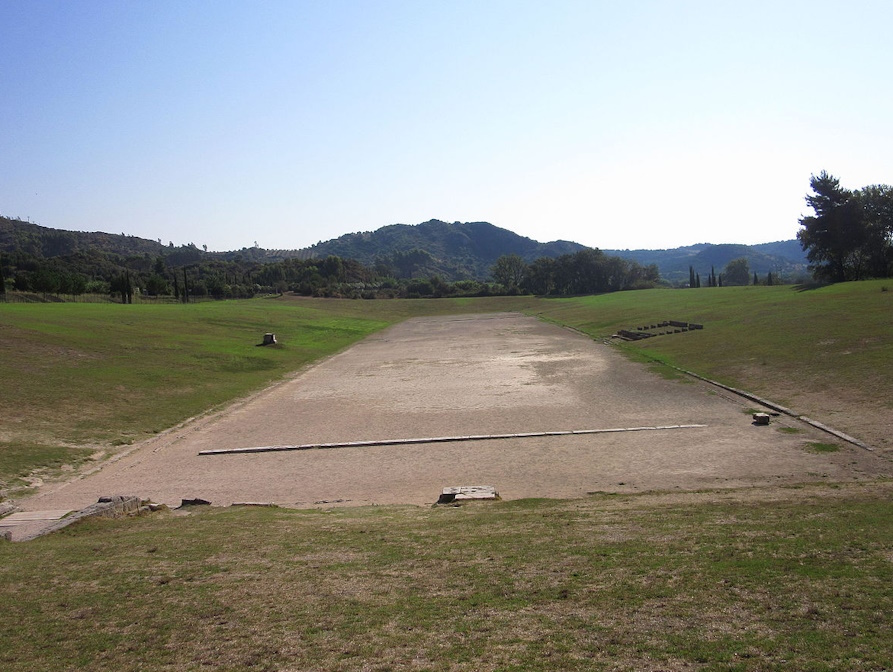 |
Pheidias' workshop The Stadium at Olympia
Hellenistic period
The late 4th century BC saw the erection of the Philippeion. Around 300 BC the largest building on the site, the Leonidaion, was constructed to house important visitors. Due to the increasing significance of the games, further athletic buildings were constructed including the Palaestra (3rd century BC), Gymnasion (2nd century BC) and bath houses (c.300 BC). Finally, in 200 BC, a vaulted archway was erected linking the entrance of the stadium to the sanctuary.
Roman period
During the Roman period, the games were opened up to all citizens of the Roman Empire. A programme of new buildings and extensive repairs, including to the Temple of Zeus, took place. In 150 AD, the Nympheum (or Exedra) was built. New baths replaced the older Greek examples in 100 AD and an aqueduct was constructed in 160 AD.
The 3rd century saw the site suffer heavy damage from a series of earthquakes. Invading tribes in 267 AD led to the centre of the site being fortified with material robbed from its monuments. Despite the destruction, the Olympic festival continued to be held at the site until the last Olympiad in 393 AD, after which the Christian emperor Theodosius I implemented a ban. The Temple of Zeus was apparently destroyed around 426 AD, during the persecution of pagans in the late Roman Empire, following an edict by Theodosius II enforcing the ban on pagan festivals. The workshop of Pheidias was turned into a Basilica and the site was inhabited by a Christian community. Archaeological evidence suggests that small scale Olympic events (perhaps in Christian guise) were still being held secretly until Justinian's plague and two earthquakes devastated the place mid 6th century. Repeated floods ensured that the settlement was finally abandoned altogether in the early 7th Century.
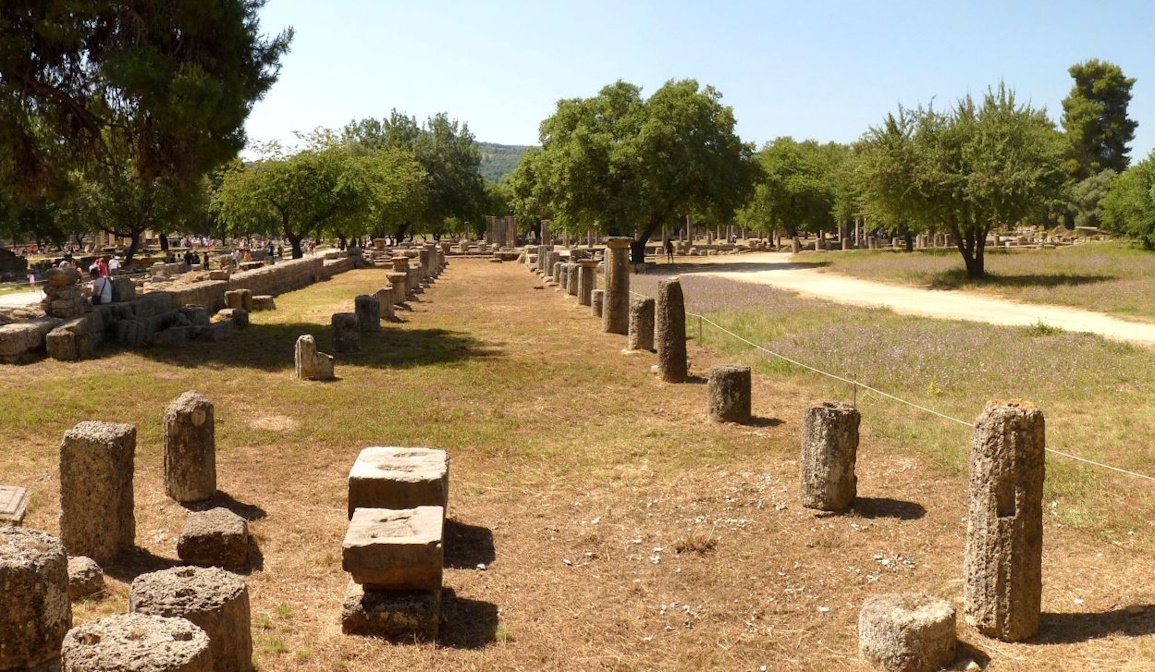 |
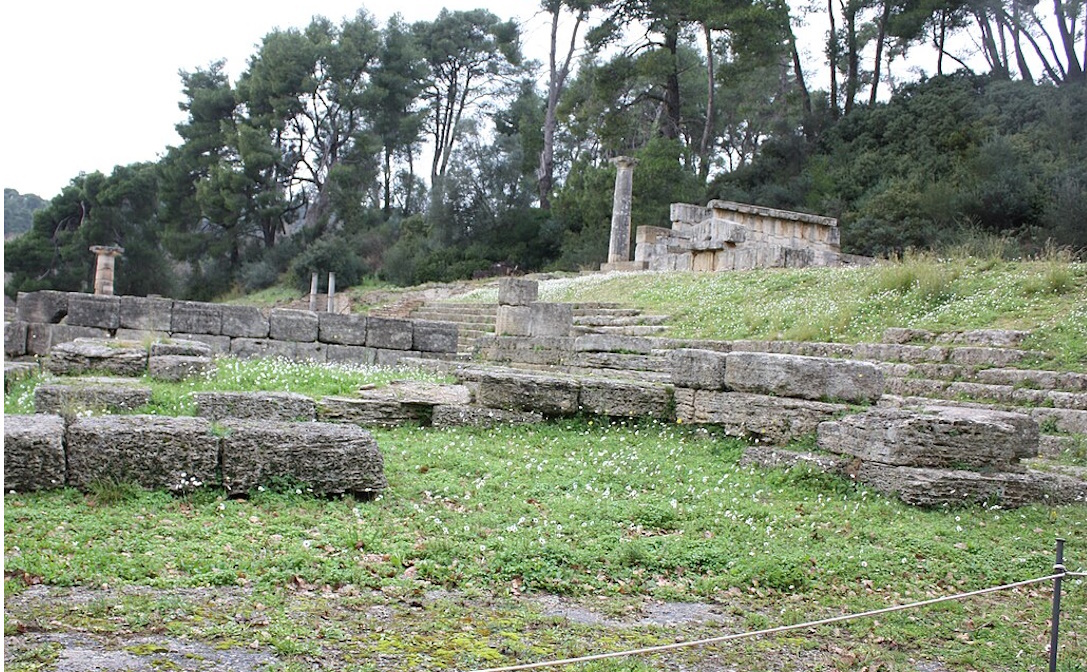 |
The Gymnasium The Metroon
 |
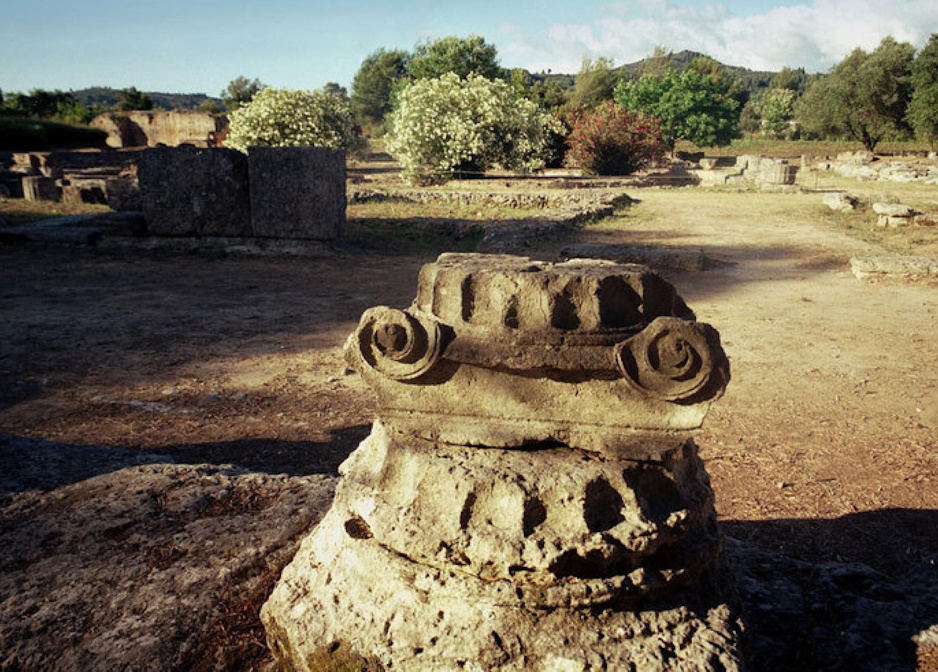 |
The Prytaneion The Leonidean
 |
 |
The Philippeion The Echo Stoa
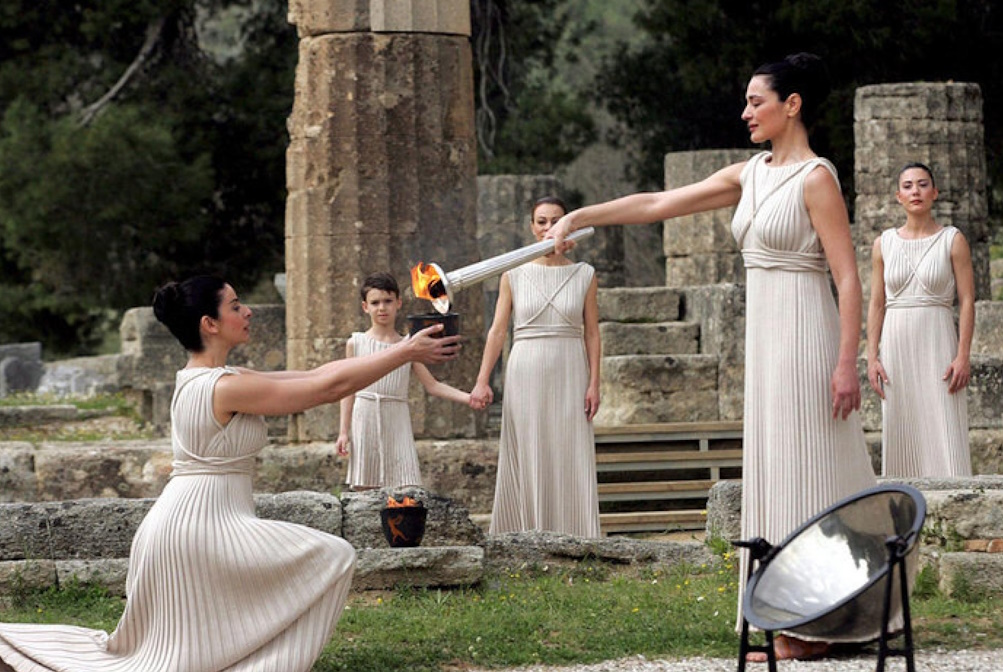 |
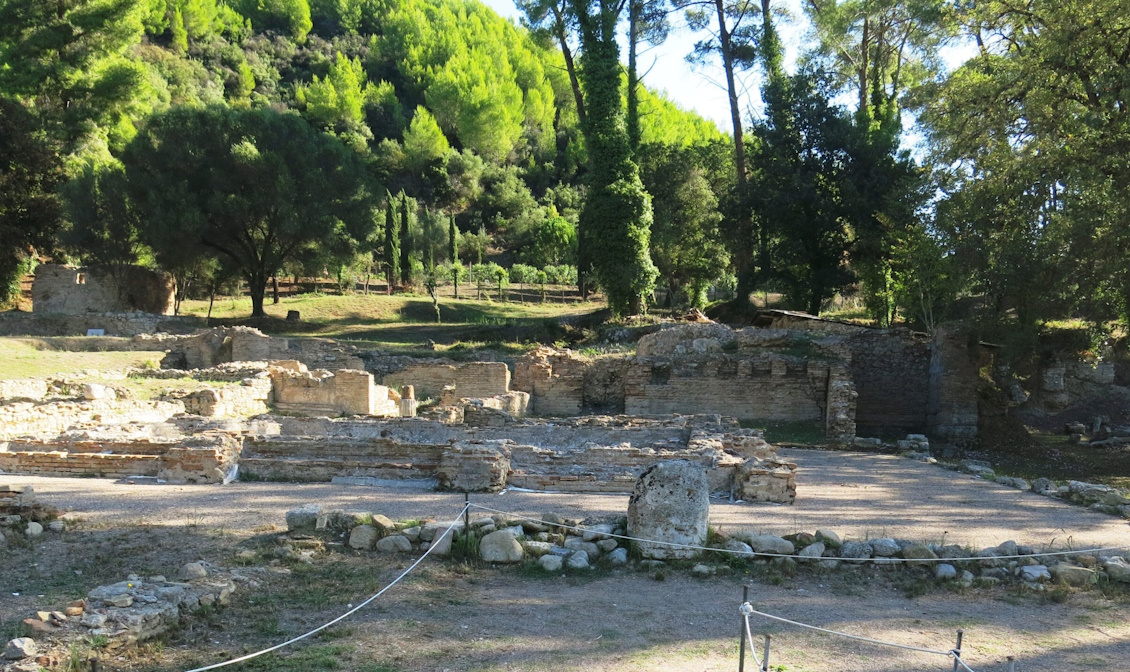 |
Olympian flame lighting ceremony The Kronios baths
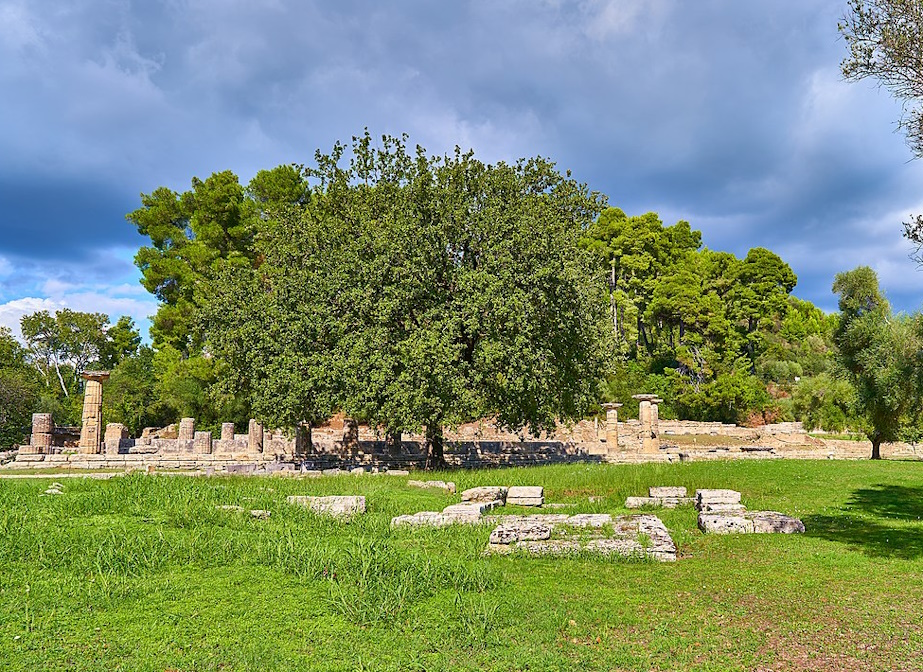 |
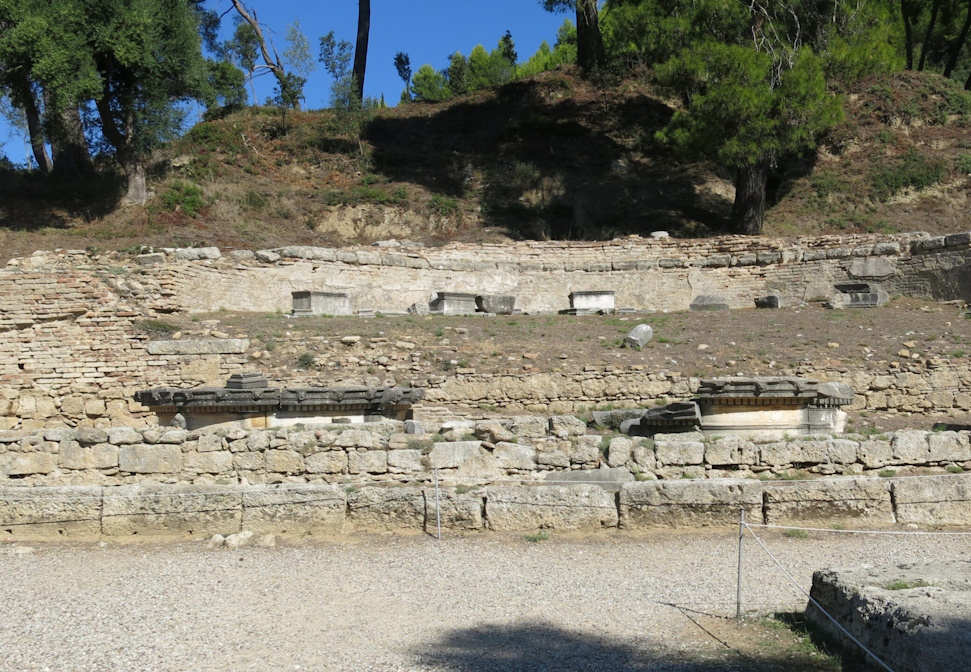 |
The Pelopion The Nymphaeum